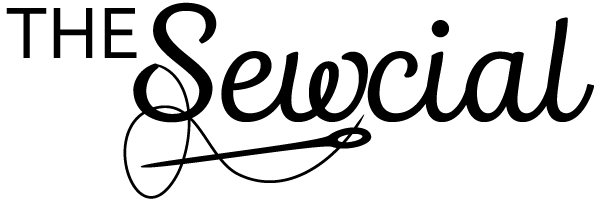
Join is in the magical world of Unicorns with this floral, glitter and unicorn collection! Unicorn Springs is a beautiful collection detailed with pretty unicorns and elegant flowers. We used this to create the Woven Lines quilt, perfect for an intermediate quilter.

Crochet your own decorative oven mitt as the perfect gift for any cook or baker this holiday season. This beautiful mitt is quick and easy to make and makes a great holder for utensils!

Let’s talk about fabric! You’ve purchased your fabric you’ve bought the pattern and you’re ready to sew! But, suddenly there are all these terms and you have questions. Which way does the fabric go to cut it? What do the lines mean on the pattern? How do you fold your fabric together? Knowing these simple terms will help answer all of those questions.

Fold: Folding the fabric in half makes it easier to cut two of the same piece at once – for example, sleeves or half a bodice when there’s a centre seam. Folding also allows you to cut single symmetrical pieces – notice that some pattern pieces correspond to half of a fabric piece only, and will say “cut on fold” if they’re to be cut like this. DON’T cut the folded edge when you open up the piece, you will have the full-size piece. Whether you fold your fabric right sides together or wrong sides together is going to depend on your fabric and your markings. If you have a sheer fabric you won’t want to make any visible markings but you will want to mark which side you use as the right side for all your pieces. If you’re using a fabric like the cotton above you will want to fold it right sides together and make your markings on the wrong side.
Selvedge: is a “self-finished” edge of the fabric, keeping it from unravelling and fraying. The term “self-finished” means that the edge does not require additional finishing work, such as hem or bias tape, to prevent fraying. The edges of a raw fabric that run along the edge with the grain. The fabric has a selvedge edge so that it doesn’t fray before it’s sold. When you fold your fabric to be cut you will fold it selvedge edge to selvedge edge.
Fabric Grain: The orientation of fibres, woven or knit together, to create a fabric. The grain creates lines that run parallel and perpendicular to the selvedge. The basic difference between woven and knit fabrics is in the yarn or thread that composes them. A knit fabric is made up of a single yarn, looped continuously to produce a braided look. Multiple yarns comprise a woven fabric, crossing each other at right angles to form the grain. Stretching is one of the tests to know whether a fabric is knit or woven. A knit fabric will stretch easily along its width, slightly less along its length. A woven fabric will have barely any give along its width, and only slightly more give along its length.
Bias: is any grain that falls between the straight and cross grains. When the grain is at 45 degrees to its warp and weft threads it is referred to as “true bias. The bias will run diagonally across the grain of the fabric, where the woven fabric has more stretch or give.
Warp: Warp threads are the threads that run along the length of the yardage (up-and-down, vertically) and parallel to the selvage (horizontal axis). The thread that runs the length of woven fabric (“up” and “down”).
Weft: Weft threads are the threads that run from selvage to selvage (side-to-side, horizontally). The threads that run at right angles to the length of a woven fabric, otherwise known as cross-grain. Nonwoven fabrics such as felt, vinyl, suede, and leather do not have warp and weft threads.

